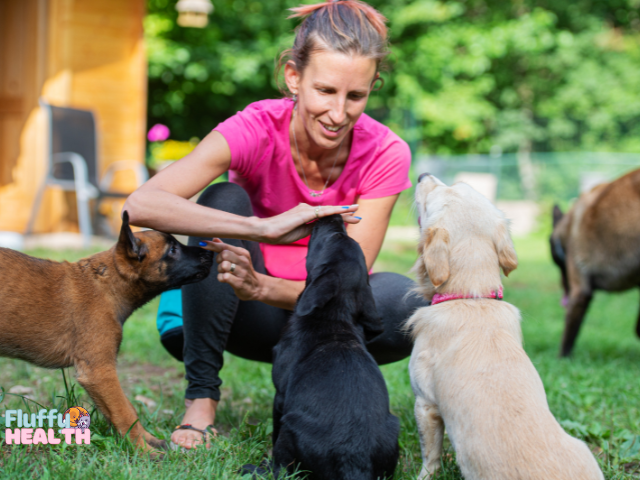Puppy teeth may seem cute at first, but they can cause problems as your puppy grows. Knowing how to train a puppy not to bite is very important for creating a safe and happy environment.
To help you understand how to train a puppy not to bite, we have created a simple guide. This guide includes practical methods to manage and redirect biting. We will show you how to use gentle and positive reinforcement to match your puppy’s learning style.
With consistent training, patience, and clear communication, you can teach your puppy better ways to play without using their teeth. Our guidance will help you create a safe and friendly environment for your puppy and those around them.
Table of Contents
Why Bite Inhibition Is Very Important To Training A Puppy Not To Bite
Understanding how to train a puppy not to bite is one of the most important tips for raising a well-behaved adult dog. This training is called bite inhibition. It helps the puppy learn how to control their bites and to know the difference between play and aggression.
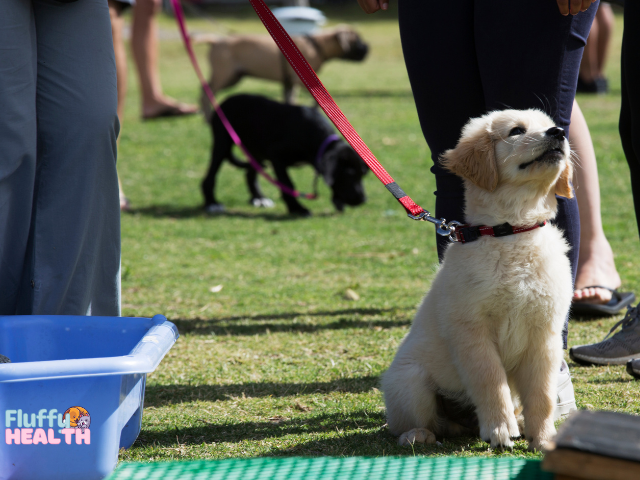
Bite inhibition teaches the puppy to use their mouth gently. You should reinforce good behavior with praise and treats when the puppy plays nicely without biting too hard.
Provide appropriate chew toys to help redirect biting. This lets the puppy chew safely and satisfy their urge without hurting anyone. With consistent practice and patience, you can raise a calmer, more respectful adult dog who knows how to play appropriately.
Why Puppies Bite & How to Train a Puppy Not to Bite
Puppies explore their world using their mouths, so it’s important to know how to train a puppy not to bite so that you can teach them to play gently with people and other animals. During their socialization period, which lasts from about 6 to 18 weeks, puppies can mouth play, but you must set clear limits on how hard they can bite.
To teach your puppy about bite inhibition, create a simple scale. For example, rank bites from 1 to 5, with 1 being very gentle mouthing and 5 being a hard, painful bite. Use this scale to show your puppy what level of pressure is okay during playtime. If they bite too hard (a 4 or 5), stop playing and withdraw your attention.
This approach helps puppies learn the difference between acceptable and unacceptable biting. Also, use time-outs: if your puppy bites too hard, calmly leave the interaction for a short time. This consequence teaches them that rough play stops the fun.
With consistent practice, your puppy will learn to bite softer and play more gently, making interactions enjoyable and safe for everyone.
Positive Training Techniques to Stop Puppy Biting
When learning how to train a puppy not to bite, gentle teaching methods are most effective. Research shows that these methods work over 90% of the time. Simply because gentle training helps puppies feel safe and open to learning.
Socialization is important in a puppy’s early development. Playing with their littermates and friendly dogs teaches them how to control their biting. During these playtimes, puppies learn social cues and self-control, which helps them understand their physical limits.
As a pet owner, encourage soft and playful interactions. If a puppy bites too hard, calmly stop the play. This shows them that biting is not acceptable. By doing this, you teach them how to play nicely without hurting others.
It’s also important to avoid negative reinforcement, like yelling or hitting. These actions can scare your puppy and may cause them to become aggressive or anxious later. A caring approach will build trust between you and your puppy, leading to a well-behaved and happy dog.
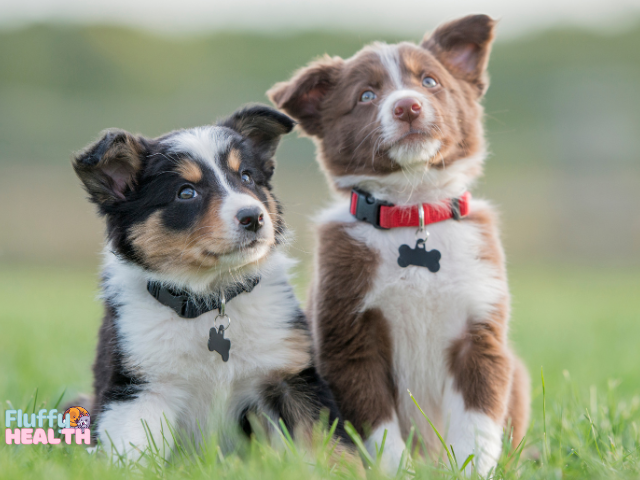
Why Bite Inhibition Sets the Stage for a Well-Behaved Adult Dog
If you teach your puppy to control their biting early, it’s way less likely they’ll hurt anyone when they’re older. That’s why it’s so important to know how to train a puppy not to bite from the start. Especially in their first few months.
By the time your puppy is about three months old, they should start biting more gently. Teaching them this early helps them understand how strong they are and why being gentle matters. By four and a half months, they should be able to play without causing any pain.
To help them learn bite control, it’s important to engage in activities that teach appropriate behavior. Hand-feeding can help puppies connect gentle actions with positive experiences, while gentle playtime teaches them the limits of their strength. These interactions allow them to practice being gentle in a safe setting.
For pet owners who need extra help, specialized training programs from places like Top Dog Academy and SIRIUS Puppy Training can be very useful. These programs teach proper socialization and training methods, helping puppies grow into well-mannered dogs that interact safely with people and other animals.
| Training Technique | Impact Level | Recommended Age |
|---|---|---|
| Supervised Play | Moderate to High | 6-18 weeks |
| Time-Out for Hard Bites | High | Up to 6 months |
| Consistent Redirecting | High | Up to 8 months |
Putting time into teaching your puppy not to bite makes things safer and strengthens your bond. It lays a good foundation for a loving and respectful relationship.
Simple Ways To Train Your Puppy Not To Bite From The Start
The earlier you start teaching your puppy not to bite, the easier it is to build good habits. Knowing how to train a puppy not to bite can make all the difference! Puppies bite naturally as they explore and play, especially during teething. To handle this behavior effectively, start training as soon as you bring your puppy home.
Here are some simple methods to reduce excessive biting:
- Give Appropriate Chew Toys: Some puppies love to bite everything like your fingers, your furniture, you name it! A great way to handle this is by offering them a safe chew toy and gently guiding them to it. It’s one of the easiest steps to start teaching your puppy not to bite.
- Using High-Pitched Sounds to Mimic Puppy Play Etiquette: When your puppy bites too hard, making a high-pitched sound can help. This noise tells them their bite was too strong. It encourages them to play softer. Studies show puppies stop biting when they hear this sound, just like they do with each other.
- Use Positive Reinforcement: Reward your puppy with treats or praise when they play gently or pick up their toys instead of your hands or feet. This encourages them to repeat good behavior.
- Teach Bite Inhibition: If your puppy bites too hard during play, yell out or say “no” to imitate their littermates. This helps them learn that biting can hurt and is not acceptable.
- Socialize Your Puppy: Introduce your puppy to other dogs in a safe environment. Dogs that interact well can teach your puppy appropriate play behavior and limits.
- Set a Routine: Consistency is important in training. Schedule specific times for play, training, and quiet time to help your puppy learn boundaries.
- Avoid Rough Play: Do not play games that encourage biting, like wrestling or tug-of-war, as they can promote aggressive behavior.
- Consult a Professional: If biting does not improve or gets worse, talk to a professional dog trainer or behaviorist. They can give you specific strategies to help.
By using these strategies early, you can help your puppy become a well-behaved and happy dog. Remember, patience and consistency are important as your puppy learns what is expected.
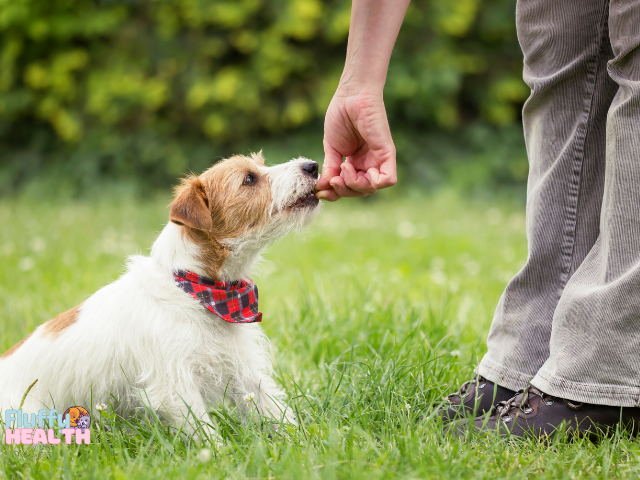
How Do You Train A Puppy Not To Bite?
Training a puppy not to bite is important for their care. Puppies use their mouths to explore, but teaching them to control their biting can prevent problems later.
Puppies bite for different reasons, like teething, having too much energy, or wanting attention. From 3 to 4 months old, they may chew because their teeth hurt, so giving them chew toys can help.
Use positive reinforcement when training. If your puppy stops biting, reward them with treats and praise. This encourages them to behave like you want. Be consistent so your puppy knows what you expect.
To redirect biting, offer a toy when your puppy tries to bite. This discourages biting and shows them what is okay to chew on.
Creating a safe space can also help. Playpens or crates can keep your puppy secure and calm. If biting continues, consider reaching out to a dog trainer for help.
By following these tips, you can strengthen your bond with your puppy and teach them that biting is not acceptable.
| Technique | Description | Effectiveness |
|---|---|---|
| Redirection | Offering a chew toy when biting behavior is initiated. | High |
| Positive Reinforcement | Rewarding non-biting behavior with treats and praise. | Very High |
| Understanding Causes | Addressing the specific reasons behind biting, such as teething or attention-seeking. | High |
How To Handle Play Time When Training A Puppy Not to Bite
When you’re playing with your puppy, it’s super important to notice when things get a little too rough. This is a big part of learning how to train a puppy not to bite and keep everyone safe. It stops bad behavior and keeps you and your pet safe. Puppies often bite a lot when they are teething, around 12 to 13 weeks old. Knowing this helps you train them better.
If your puppy bites during playtime, stop the game right away. This helps them learn that gentle play is okay, but biting isn’t. It’s a simple but powerful way to teach them what’s right. By ignoring them after a bite, you calm them down and teach them to be gentler next time.
Training works best if you’re consistent. Always stop the game and give them something else to do when they bite. This helps control their biting and makes them a better pet for your family.
- Always redirect biting to a toy or chew acceptable in play.
- Maximum engagement in games like tug-of-war should be monitored to ensure it does not escalate into undesirable biting.
- Make sure toys like rubber KONGs or durable ropes are available to substitute for hands or furniture during playtime.
| Age | Behavior | Training Response |
|---|---|---|
| 12-13 weeks | Peak biting phase | Use of high-pitched “ow!” to indicate pain |
| 3-5 months | Decrease in mouthing and biting | Encouragement and positive reinforcement |
| 6-7 months | Teething ends, adult teeth present | Consistent redirection to chew toys |
How Chew Toys Help Train Your Puppy Not To Bite
Stopping your puppy from biting starts early. One of the easiest ways to help is by giving them the right chew toys. This not only helps teach your puppy good habits but also encourages them to stop bad behaviors, protecting your hands and furniture in the process.
Choosing the Right Chew Toys for Effective Training
Pick toys your puppy loves! They should be safe, durable, and fun for your puppy to chew on instead of your fingers. Training your dog to chew on toys takes short sessions every day, about 20-30 minutes. In a week or two, puppies learn what they can and can’t chew on.
Redirecting your puppy to chew toys helps stop biting. This method cuts down on bad behavior.
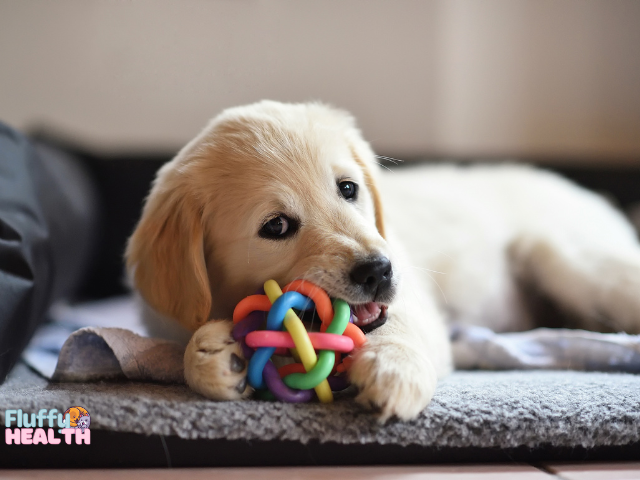
Why Consistency is Very Important When Teaching a Puppy Not to Bite
Consistency is the trick to teaching your puppy not to bite. Every time you spend time with them, use it as a chance to guide their behavior. Use chew toys instead of your fingers or furniture. Keep in mind that puppies, like small children, may take time to understand what you expect from them. Patience is essential in their learning process.
Without using chew toys regularly, only 10% of puppies learn to stop biting. Using the same command, like “off”, helps stop jumping and nipping 90% of the time.
| Prevention Technique | Effectiveness | Training Consistency Required |
|---|---|---|
| Redirection to Chew Toys | 96% respond well | High (Daily Practice) |
| ‘Off’ Command Application | 90% success rate | Medium to High |
| Controlled Playtime | 75% reduction in nipping | Medium (Structured Sessions) |
Watch how your puppy reacts when you teach them what to chew on. If they don’t get it after a week, try something different. An active puppy learns fast and picks up good habits. This leads to a better relationship with your dog.
How Crates Can Help Train a Puppy Not to Bite
It’s important to use crates properly to change a puppy’s behavior. Think of the crate as your puppy’s chill-out zone. It’s a safe spot where they can calm down and reset when things get too exciting. Putting your puppy in the crate gently can help them learn to relax and discourage biting.
Make sure the crate is big enough for your puppy to move around and lie down comfortably. Start with short periods in the crate to help with bladder and bowel control, gradually increasing the time while giving treats or toys to create a positive experience.
Some puppies might not like crates at first due to their novelty or past bad experiences. Begin crate training slowly. Use soft bedding and consider adding a calming supplement inside. Place treats in the crate to encourage your puppy to go in, and keep the door open at the start.
Crate training takes patience and consistency. Feed your puppy in the crate and close the door afterward to help them get used to it. Watch their behavior and adjust the crate time to keep it a positive experience.
Crate training helps with unwanted behaviors and keeps your puppy safe and comfortable. Adding a favorite toy can keep them busy and prevent them from chewing on the wrong things. By following these steps, you can gently reduce puppy biting with crate training.
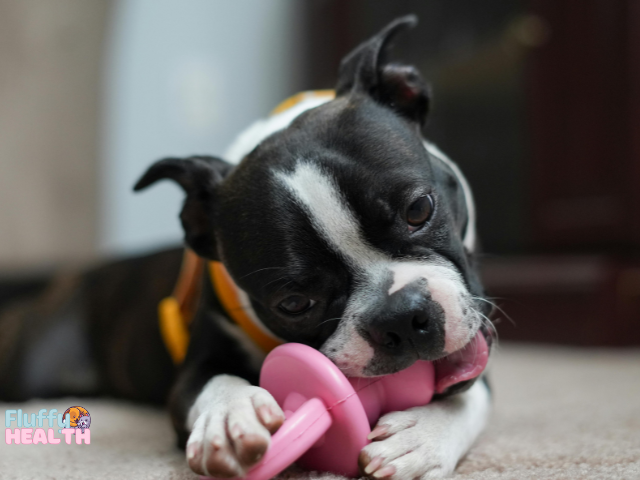
How Obedience Training Can Help Stop Puppy Biting
Obedience training isn’t just about stopping biting—it’s about teaching your puppy good habits that will last a lifetime. Starting early makes it so much easier to show your puppy the right way to behave.
Start with basic commands during playtime. Use commands like “sit” or “stop” to mix discipline with fun. This helps reduce biting and teaches your puppy better behaviors. In the end, this training helps your puppy become a well-behaved adult dog.
Using Commands to Help Train Your Puppy Not to Bite
Using simple commands during playtime can help puppies stop biting. Puppies like to explore their world with their mouths, which can lead to biting. Commands like “sit,” “stay,” or “gentle” teach them to focus their energy on better actions as they learn about their surroundings.
Also, give treats or praise during playtime to encourage good behavior. When a puppy responds to a command or plays nicely, reward them right away with a treat or enthusiastic praise. This helps them connect their good behavior with positive results.
This method promotes learning without punishment and builds a trusting relationship with your puppy. It’s important to let them explore safely while learning the limits of their behavior.
How Puppy Classes Can Help Train a Puppy Not to Bite
Puppy classes are a fantastic way to teach your puppy good social skills and help them learn how to stop biting in a safe, supervised environment. These classes provide a safe space for puppies to interact, teaching them to behave nicely with other dogs and adjust from living with their littermates to their new homes.
Using a mix of fun and discipline is the best way to teach in these classes. Making obedience training enjoyable helps reduce biting and boosts puppies’ confidence and control over their actions.
Remember, each puppy learns at their own pace. The goal is to lower biting while building a strong bond between you and your puppy. With patience and positive reinforcement, you are helping your puppy prepare for a happy life and better interactions with others.
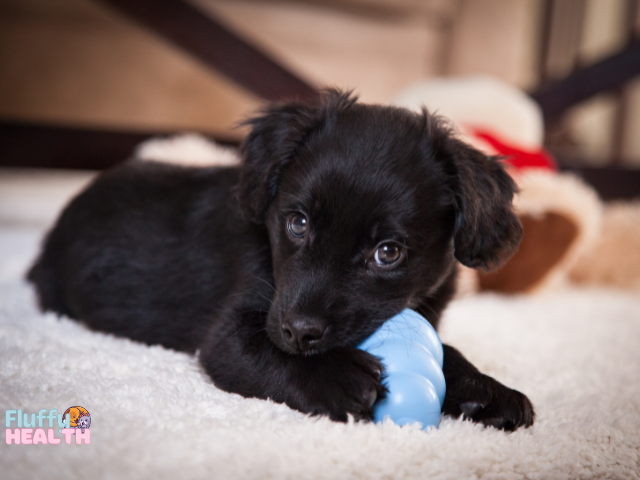
Understanding & Managing Your Puppy Energy To Prevent Biting
Puppies are full of energy, kind of like little kids! If they don’t get enough exercise or play, they might end up biting and mouthing to let it out. Exercise is important for keeping them healthy and reducing biting. Walking your puppy and giving them treats can help teach them good behavior. Training sessions can also help burn off extra energy and teach important skills.
Using Physical Exercise to Prevent Biting
Trainers like David Levin know that active puppies usually behave better. Games like fetch or simple activities like running around in the yard can burn off your puppy’s extra energy. A tired puppy is way less likely to bite! Be careful with sudden movements, as they might cause nipping.
Using Mental Stimulation to Reduce Biting
Keeping your puppy’s brain busy can do wonders for stopping biting. Fun toys, short training sessions, or even puppy school can keep them focused and less likely to nip.
Positive reinforcement, as Dr. Elliott suggests, is vital for teaching good habits. Consistency is important, and over time, puppies will learn to behave better.
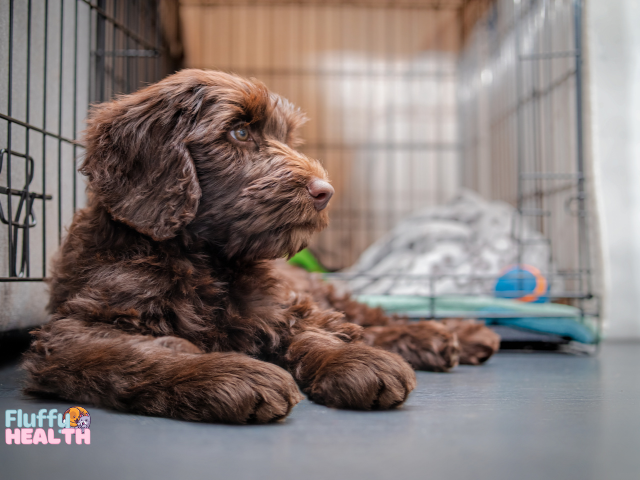
Conclusion
Training your puppy not to bite can be a fun and rewarding journey! It takes patience and consistency, but you’ll see great results with positive reinforcement. Try redirecting your puppy’s playful energy to fun toys, practicing bite inhibition, and giving lots of praise for good behavior.
Just remember, biting is a normal part of growing up for puppies. With the right guidance and a gentle approach, you can help them become the loving and well-behaved companion you’ve always wanted. If you ever feel stuck or need extra support, don’t hesitate to reach out to a professional trainer or your veterinarian. They’re there to help you on this exciting adventure!

